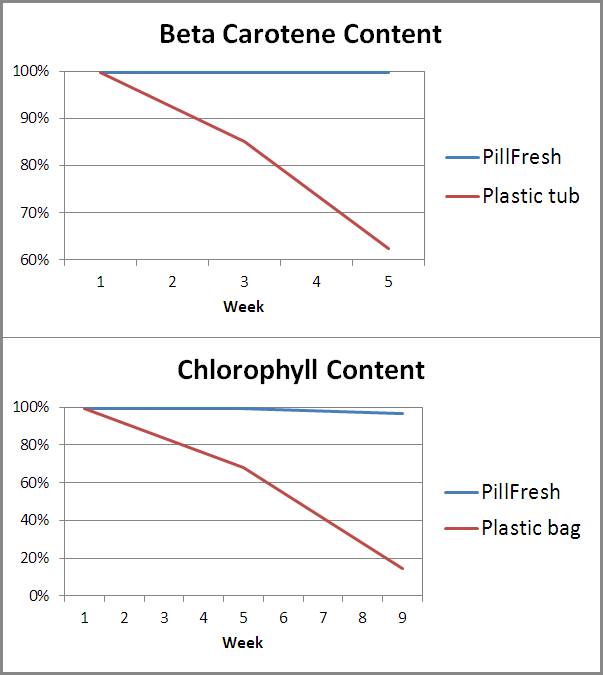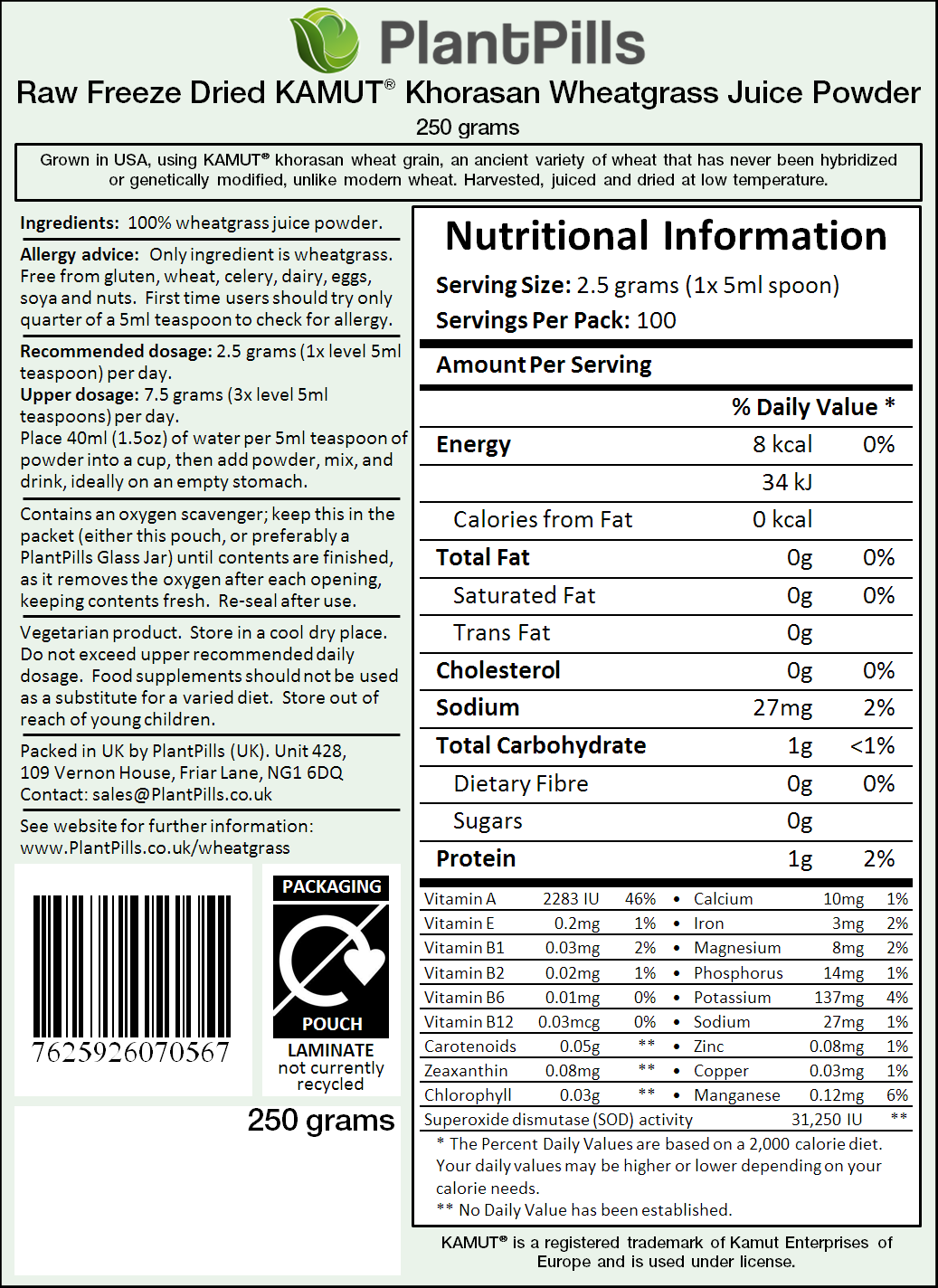It is sensible for anyone who is new to taking wheatgrass, to initially take just a quarter of one 5ml teaspoon spoon (about 0.6 grams) and monitor themselves for any adverse reactions for 24 hours. If there is no reaction, proceed with supplementation the following day.
One 250g pack of PlantPills Wheatgrass Juice Powder contains the solids of 4.1 litres of wheatgrass juice (1.1 US gallon).
4.1 litres (1.1 US gallon) was extracted from 5.3 kilograms of fresh raw KAMUT® khorasan wheatgrass (11.7 lb).
5.3 kilograms of grass is roughly equivalent to 12 trays of wheatgrass (each tray measuring 40x28cm or 16x11”).
One 250g pack of PlantPills Wheatgrass Juice Powder contains the equivalent of 138 shots (30ml or 1oz) of wheatgrass, with 1.8 grams of PlantPills Wheatgrass Juice Powder equivalent to one 30ml/1oz shot of wheatgrass.
One 5ml teaspoon is roughly 2.5 grams of powder, extracted from 41ml of juice (1.4 x 30ml/1oz shots).
Two 5ml teaspoons is roughly 5 grams of powder, extracted from 82ml of juice (2.8 x 30ml/1oz shots).
Three 5ml teaspoons is roughly 7.5 grams of powder, extracted from 124ml of juice (4.1 x 30ml/1oz shots).
Ann Wigmore specified that “1 to 4 ounces at a time will do”
[33], this is equivalent to 1-3 teaspoons of PlantPills wheatgrass juice powder.
Directions: Mix into liquid before drinking, ideally on an empty stomach.
The most traditional way of consuming wheatgrass juice is via a “shot”. To administer via this method, first add water to a cup, and then place the powder onto the water, and mix.
40ml (about 1.5oz) of water should be added to the cup for every 5ml teaspoon of powder. Then use a fork to mix the powder into the water (about 100 revolutions in each direction), before drinking.
As with other powders (such as milkshake powder, hot chocolate powder, etc.) there may be some clumps of powder. These can be reduced with thorough mixing, but are perfectly fine. Consume immediately after mixing.
When drinking the wheatgrass juice, it is best to hold some in the mouth for a while. Spread it around the mouth, including on the cheeks and under the tongue, holding the contents in the mouth for a minute or so, like a mouthwash, before swallowing.
This route of administration is called buccal and sublingual, and provides highly efficient absorption of some of the molecules within wheatgrass juice. Some of the absorption is provided via the blood vessels under the tongue, bypassing the digestive tract, and can result in a much more efficient absorption rate, depending on the molecule[34]. Wheatgrass juice has an intense flavour, so this may be difficult or impossible for some people.
For people particularly adverse to the taste of wheatgrass, it is common to add the wheatgrass powder to a smoothie or other drink, in order to comfortably consume. A blender can cause significant degradation via oxygenation to the wheatgrass, so gentle manual mixing is preferred. Consume immediately after mixing.
Recommended dosage: 2.5 grams (1x level 5ml teaspoon) per day.
Upper dosage: 7.5 grams (3x level 5ml teaspoons) per day. Ideally should be taken first thing in the morning on an empty stomach. Can be taken all at once, or split up throughout the day.
Note: Although wheatgrass is rich in certain nutrients, it is the presence of the vast array of vitamins, minerals, enzymes, phytonutrients and grass juice factors, and not necessarily the nutritional content, that makes wheatgrass unique. Wheatgrass juice powder should be regarded as a natural nutritional supplement, rather than a primary source of nutrition.
Note: It may be beneficial to take one or two days off per week from supplementing with wheatgrass juice powder.
Ann Wigmore took wheatgrass juice on a daily basis for more than 30 years
[33], and there is no evidence to suggest that having days off is beneficial, but the body can respond positively when given periodic breaks from routine.
Note: Scientists have never found wheatgrass to be toxic in any amount when given to either animals or humans[33].
Note: Other uses for wheatgrass juice include mixing the powder into a relatively small amount of water to make a paste, and apply topically to the skin. It may be applied all-over as a general tonic, or to specific areas of interest, before being washed off after a while[33].
It has been speculated that adding wheatgrass to bathing water may be beneficial
[33].
Wheatgrass is gluten free[36], because the grass of the grain, rather than the grain itself is used. However, there is the possibility of contamination, and some wheatgrass powders do contain gluten.
PlantPills Wheatgrass Juice Powder is gluten free, and each batch is tested to confirm gluten free status.
If you are taking prescription medication, consult your doctor before use.
Re-seal packet after use and store in a cool dry place. Ambient temperature of the storage area should be below 25° Celsius (77° Fahrenheit). If the ambient storage temperature exceeds this, it should be stored in a refrigerator.
Keep contents in the packet or in a PlantPills Glass Jar until contents are finished. PlantPills Glass Jars are available for purchase in the shopping basket.
Wheatgrass juice is safe, widely consumed, and has no known toxic dose[33].
Some people may experience detox symptoms when first taking wheatgrass juice.
A quarter of one 5ml teaspoon spoon (about 0.60 grams) should be taken when first starting to supplement with wheatgrass, to monitor for any possible allergy or intolerance.
Symptoms of allergy or intolerance include severe headache, throat swelling, nausea or digestive discomfort. Please seek emergency medical care if you experience any of these symptoms in a severe form.
Persons taking the blood-thinning drug known as Coumadin (generic warfarin) are advised to completely avoid wheatgrass, or use caution and follow the advice of their healthcare professional, because wheat grass contains vitamin K, which may affect the inhibition of blood clots.
Wheatgrass contains B vitamins which are linked to increased energy. Some people may experience difficulty in sleeping if taking a large dose of wheatgrass just before bed.
It is easier on the digestive system to take wheatgrass separately from milk or other dairy products such as yoghurt or cheese.
People who are allergic to other grasses may also be allergic to wheatgrass.
People with plant allergies should consult a doctor before trying wheatgrass.
It is never advisable to start taking a new food supplement such as wheatgrass during pregnancy.
If you are taking prescription medication, consult your doctor before use.
Food supplements should not be used as a substitute for a varied diet.
KAMUT® is a registered trademark of Kamut Enterprises of Europe and is used under license.
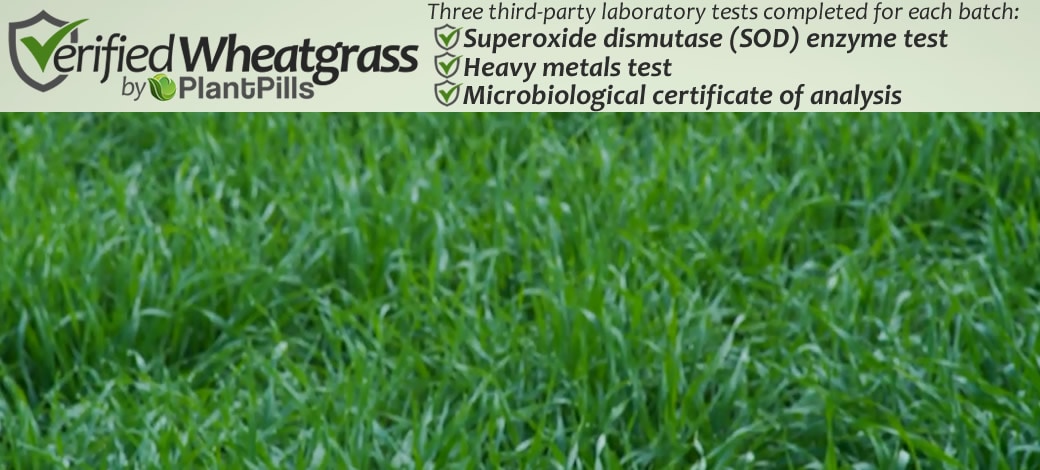
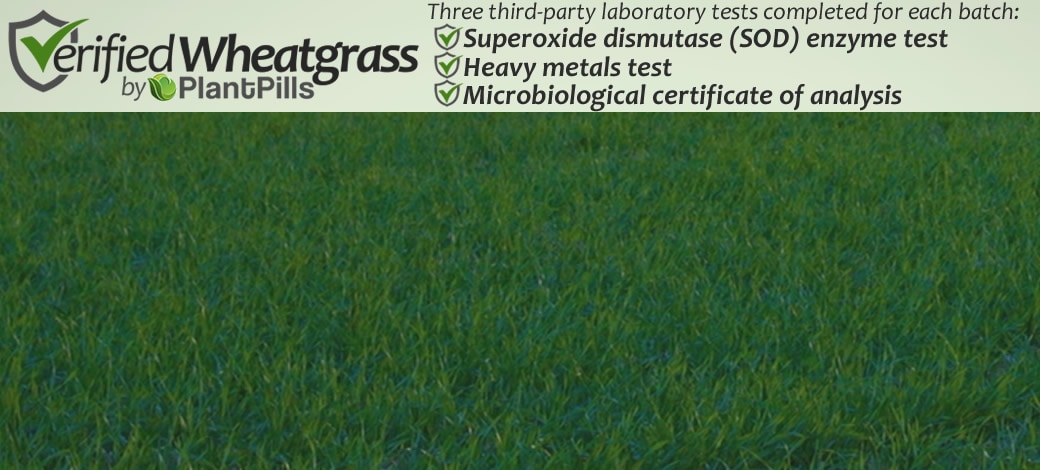
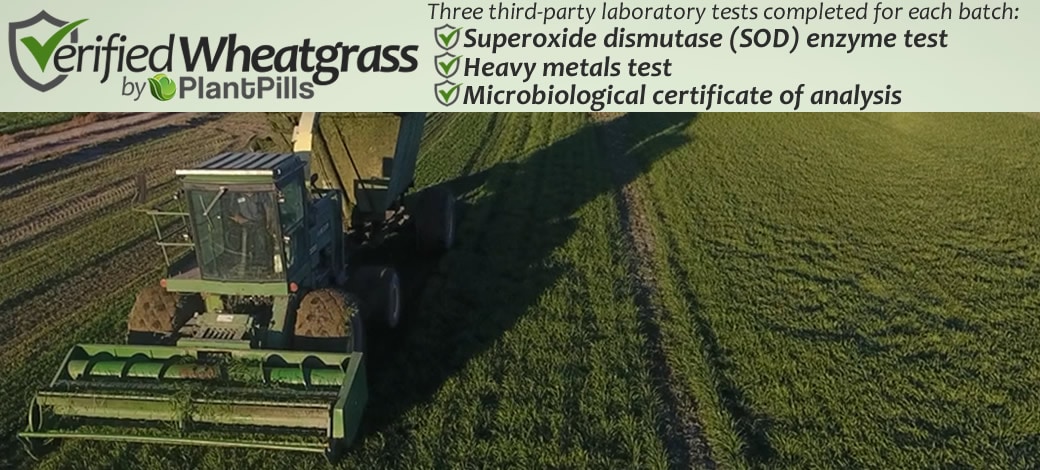
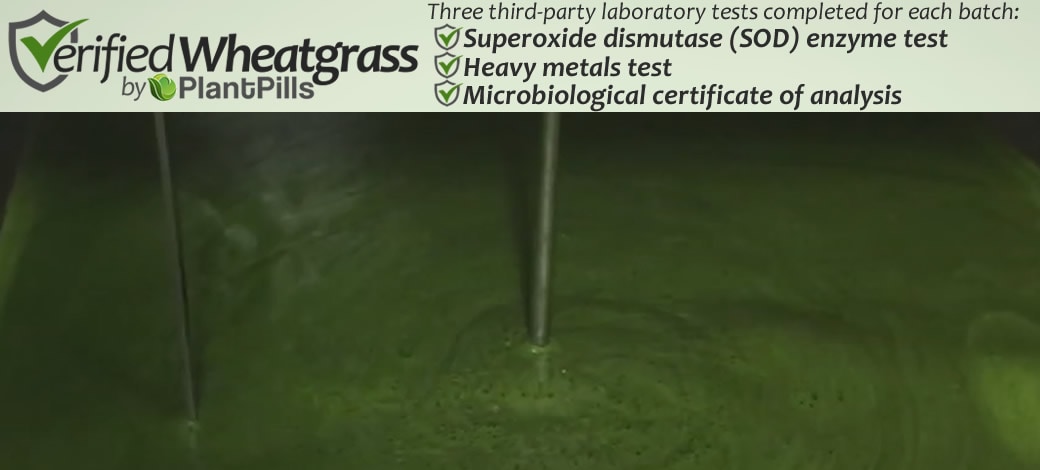
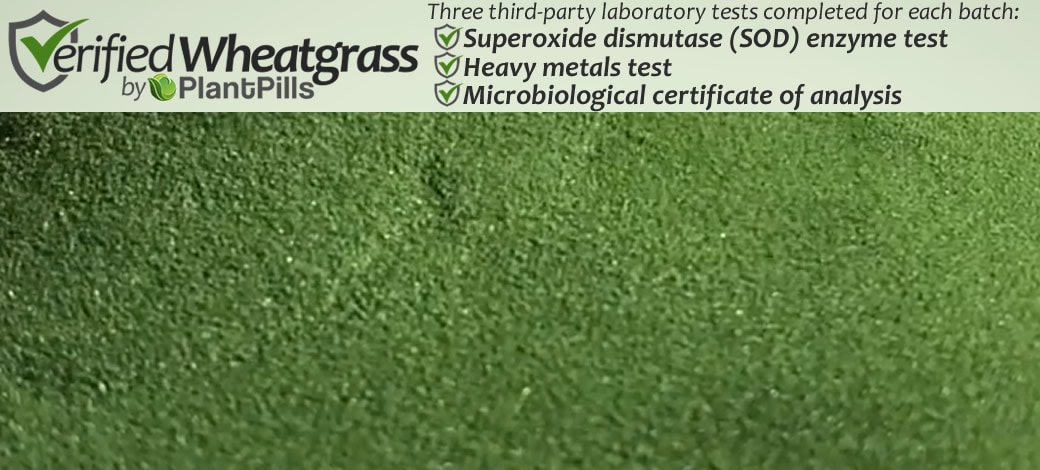
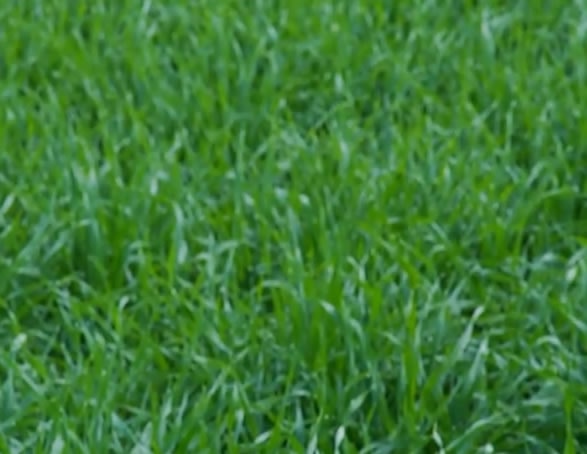
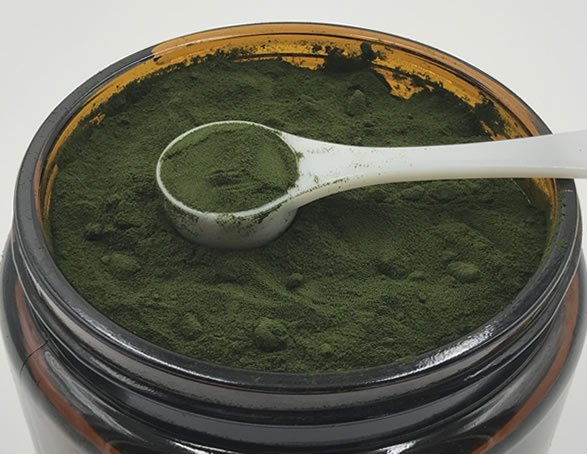
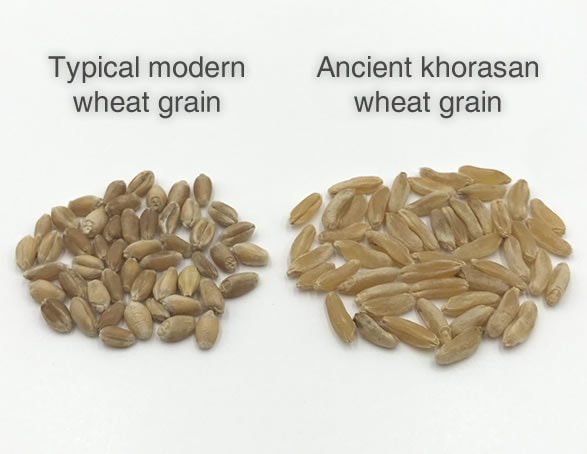 KAMUT® khorasan refers to the species of the wheat grain used, an ancient variety of wheat called khorasan. KAMUT® khorasan has never been hybridized or genetically modified, unlike modern wheat. The theory is that its retained many desirable qualities that have been lost or changed through the intensive breeding programs that have significantly altered modern wheat
KAMUT® khorasan refers to the species of the wheat grain used, an ancient variety of wheat called khorasan. KAMUT® khorasan has never been hybridized or genetically modified, unlike modern wheat. The theory is that its retained many desirable qualities that have been lost or changed through the intensive breeding programs that have significantly altered modern wheat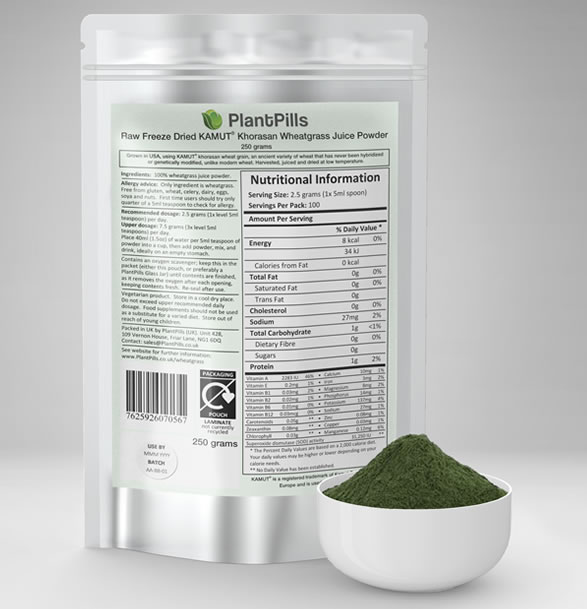



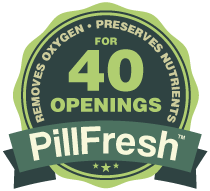 It is imperative that wheatgrass juice powder is transported and stored in an oxygen-free environment, even after opening. If wheatgrass juice powder is exposed to oxygen, the nutritional value quickly starts to diminish, because vitamins, enzymes and antioxidants are particularly sensitive to oxygen.
It is imperative that wheatgrass juice powder is transported and stored in an oxygen-free environment, even after opening. If wheatgrass juice powder is exposed to oxygen, the nutritional value quickly starts to diminish, because vitamins, enzymes and antioxidants are particularly sensitive to oxygen.
